
Mammals Around Las Vegas, Wildlife Around Las Vegas
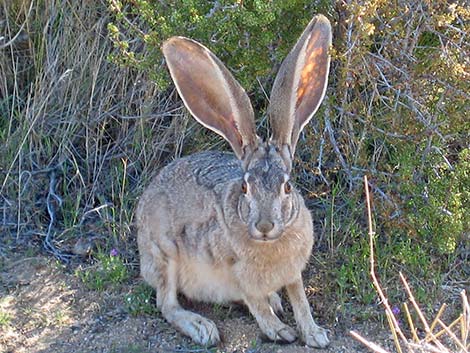 |
Black-tailed Jackrabbits (Lepus californicus) are large, diurnal rabbits of open areas. The large size, extremely long ears (tipped with black), and black tail serve to separate this species from cottontail rabbits. Jackrabbits survive by listening and watching carefully for predators. As a potential predator approaches, they sit quietly in the shade of a shrub hoping not to be seen. If the predator gets too close, they will bolt from their hiding place and run long distances at great speeds. Coyotes sometimes catch jackrabbits by taking turns running the rabbit until it is too tired to outrun a rested coyote. The end of the chase is sometimes accompanied by several rounds of gleeful coyote song. Jacks don't generally sleep in burrows; rather, they make a scrape and sleep on open ground where they can see far in all directions and run before danger gets close. Even in brushy areas, jacks make scrapes in spaces between shrubs. During the day, jacks often use pallets under bushes for shade. |
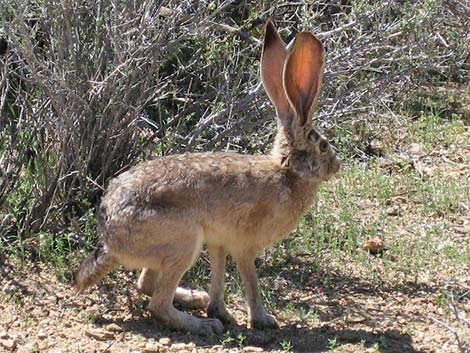 Very long legs (Mojave National Preserve) |
Jackrabbit pallets can be confused with Desert Tortoise pallets, but jackrabbits tend to dig out the dirt forming a rounded depression in the pallet, and they tend to make a berm at the edge. In contrast, tortoises tend to dig out the dirt forming a flat depression in the pallet (flat like the bottom of their shell), and tortoises tend to flatten out the dirt at the edge of the pallet. In addition, Jackrabbit pallets might have jackrabbit tracks and jackrabbit pellets, but they don't have tortoise tracks or tortoise scat. Even so, if you are looking for tortoises, it is always worth looking in jackrabbit pallets. Longevity. Most youngsters die, but if they reach adulthood, then 2-3 years probably is average and 5 years is more than expected in Clark County. Captive jackrabbits can live 7 years. Speed: 30-35 mph with bounds of 20 feet. Reproduction: In Clark County, they breed in the spring with 2 litters of 2-3 young per litter per year. Males become mature at 7 months, and females can breed a bit younger than that, such that females born early in the spring can breed by the fall. In other places and other climates, they can breed all year with as many as 7 litters per year and 7 young per litter. |
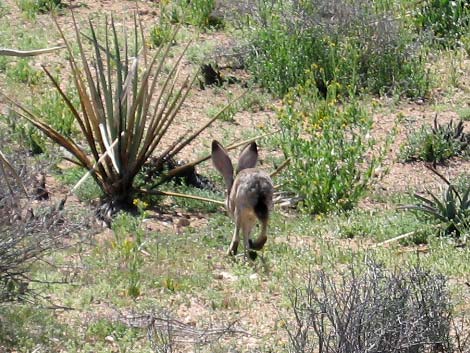 Typical view: note the black ear tips and black tail |
Size: Mammals are measured "snout to vent," which equates to tip of the nose to base of the tail. Using that standard, Jacks grow to about 2 ft long and weigh 3-6 pounds at maturity. If you stretch the ears forward and the legs backward, you can get to nearly 4 feet in length. Density in Clark County. This took some calculating and very broad assumptions. Clark county is 20,900 square kilometers (8061 square miles) in size. If we assume 10% of the county is uninhabitable due to urban development and 10% is unsuitable for other habitat reasons (e.g., mountain peaks are too high; none in Lake Mead, etc.), then we have some 16,700 habitable square kilometers. In northern Utah, where habitat is better than here, they measured a peak density of 71.4 jacks/km2 and a low density of 47.1 71.4 jacks/km2. Assuming Clark County habitat is only half as good as northern Utah habitat, that calculates out to 400,000 to 600,000 jackrabbits in Clark County. If you say that the Clark County population is in the "hundreds of thousands," I doubt anybody would argue with you. |
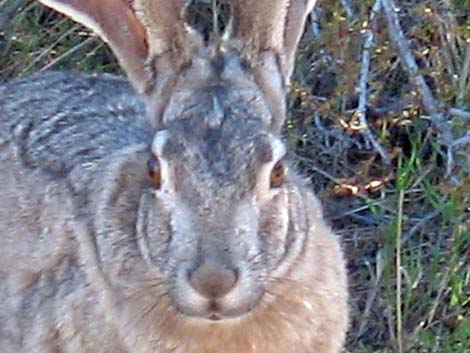 |
If you were a tasty flower or a fat stem of grass, this might be the last face you ever see! |
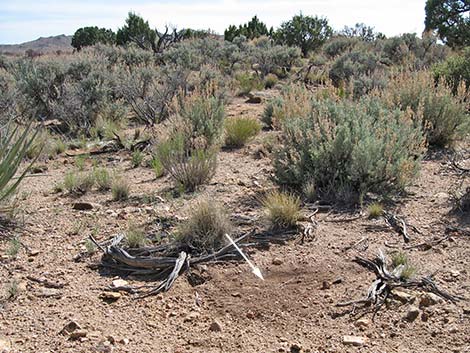 Jackrabbit "scrape" (bunny bed) |
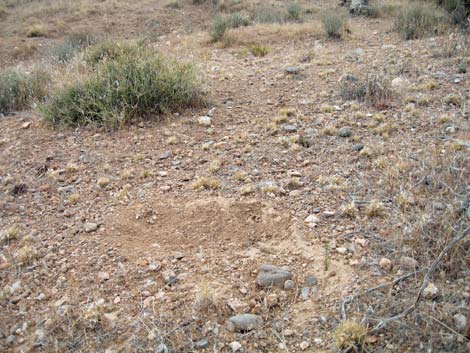 Jackrabbit "scrape" (bunny bed) |
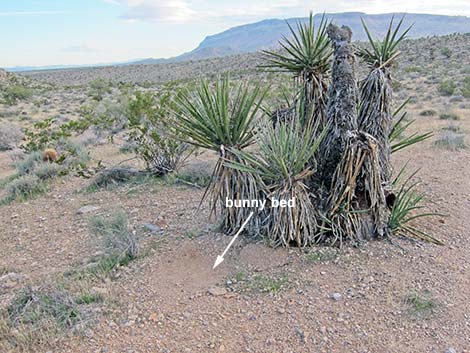 Jackrabbit "scrape" (bunny bed) |
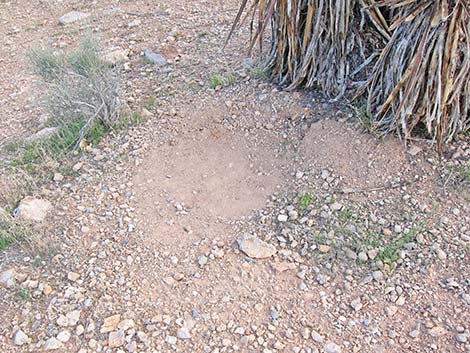 Jackrabbit "scrape" (bunny bed) |
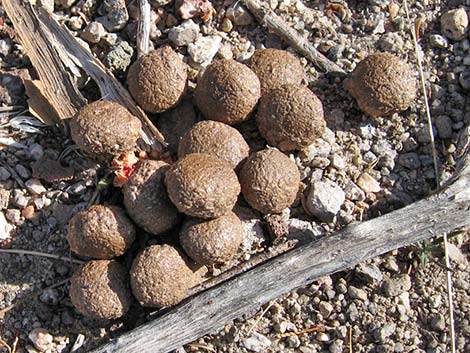 Jackrabbit scat |
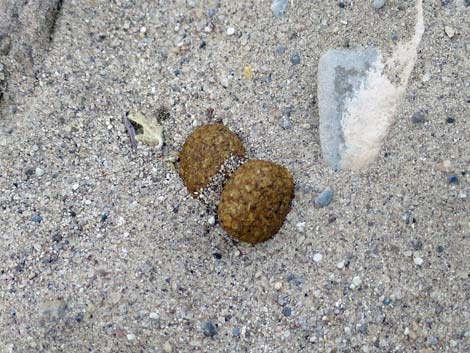 Jackrabbit scat |
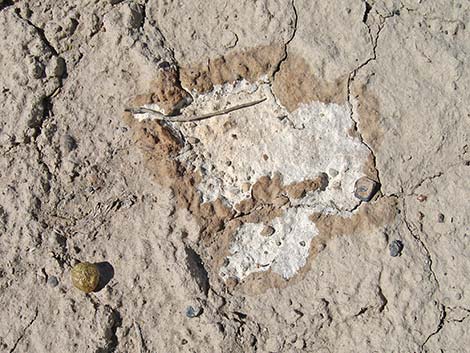 Dried Jackrabbit urine spot |
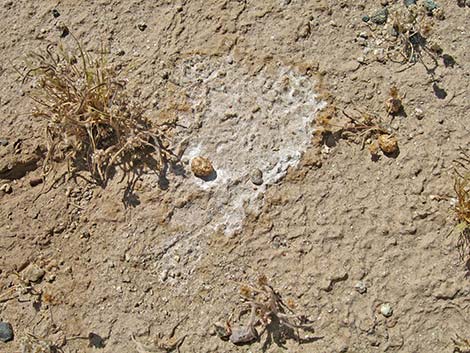 Dried Jackrabbit urine and scat |
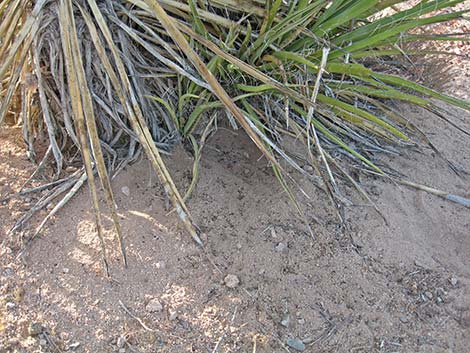 Jackrabbit pallet under Mojave Yucca |
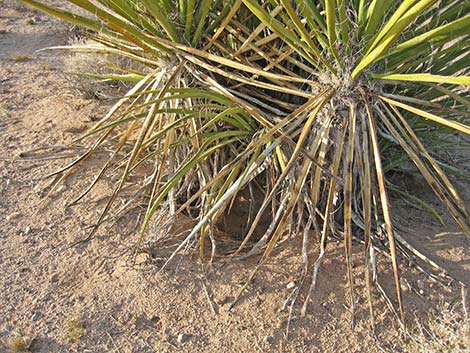 Jackrabbit pallet under Mojave Yucca |
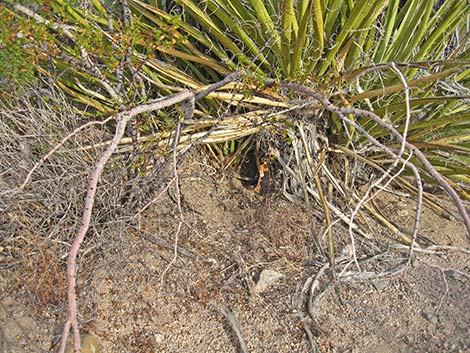 Jackrabbit pallet under Mojave Yucca |
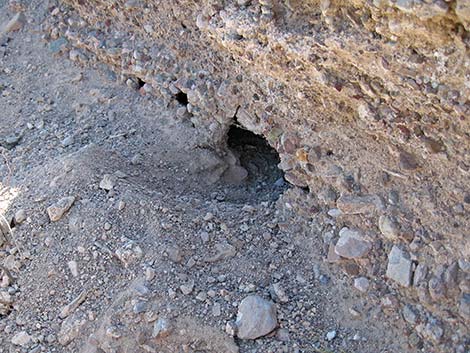 Jackrabbit pallet in hole at edge of wash (notice berm in front) |
Note: All distances, elevations, and other facts are approximate.
![]() ; Last updated 231228
; Last updated 231228
| Mammals Around Las Vegas | Wildlife Around Las Vegas | Glossary | Copyright, Conditions, Disclaimer | Home |